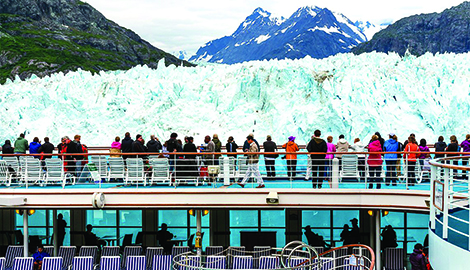After a year of canceled trips, cruises are back and retirees and seniors are eagerly planning their next waterborne excursions. For instance, Washington residents reacted quickly to the news May 20 that summer and early-fall voyages between Seattle and Alaska would return. Travel agent bookings for Alaska cruises departing this summer increased 1,600 percent the week of May 23 compared to the previous week, according to AAA.
But things will be different for oceangoers as the cruise industry and ports-of-call impose safety measures to protect passengers against COVID-19.

Pharmatech Laboratory and Diagnostics, whose work includes screening for infections and disease, recommend five precautionary steps before booking a cruise:
A new type of checklist.
In addition to sunscreen, passengers now have the added responsibility of understanding all health policies before they board. A simple misunderstanding can ruin a trip, so know the guidelines of the cruise line and destinations. For example, there are no travel restrictions to Mexico, but Hawaii recently loosened some of its restrictions, allowing those who have been fully vaccinated in the state to bypass quarantine without a pre-travel test.
Have a strategy.
Since some cruises will require a negative test within one to three days of a departure trip and other cruises will only be available to fully vaccinated individuals plan ahead. If you schedule your test or vaccine too late, your results or proof of vaccination may not come back in time, which means the ship captain may refuse to let you board.
Learning restrictions and updated policies ahead of time should also be a part of your strategy. For example, tour companies may limit reservations to keep groups small, so plan shore excursions early, know which attractions are open, and know their COVID policies so you don’t miss out on any adventures.
And don’t forget to consider what you’ll need to go home. Ports in Mexico don’t require a COVID test to enter, but you may need one to return to the United States. Likewise, your place of employment may require further proof before you can go back to work.
Pack smart.
Packing light and smart is the first piece of advice many offer. You should include masks and sanitizer wipes as essential items in your luggage. Even as mask requirements are phasing out in the U.S., foreign cities and private businesses may still require them. and it never hurts to clean your hands and wipe away germs.
Flu is coming.
Flu season normally starts around fall, aligning with the Port of San Diego’s goal to resume cruises. Along with social distancing restrictions and mask mandates ending and COVID antibodies fading within two to three months, flu season may adapt with COVID. Although last year was an anomaly with historically low levels of the flu, this year’s flu season may be different. Your immune system may not be as strong as it was if you received your vaccine at the start of the year, making you more susceptible to getting sick during or after your trip. If you are concerned, consider rescheduling or getting tested three to five days after the trip to make sure you didn’t catch anything.
Testing matters.
The risks of COVID will be lurking on every cruise. Even if you’re vaccinated, it’s still possible to catch and spread the virus to others, especially those in foreign countries that don’t have the vaccine. Getting tested ensures helps protect people in those countries until they can be vaccinated. And testing in the days after your trip ends can catch the virus and protect those around you, especially vulnerable ones.